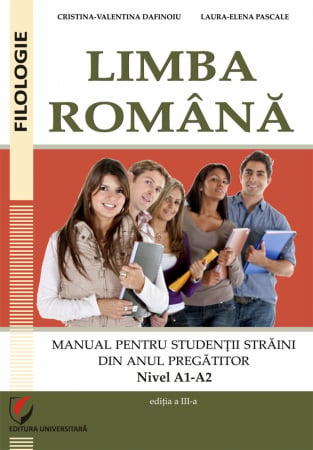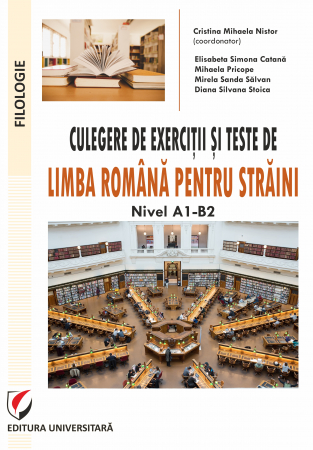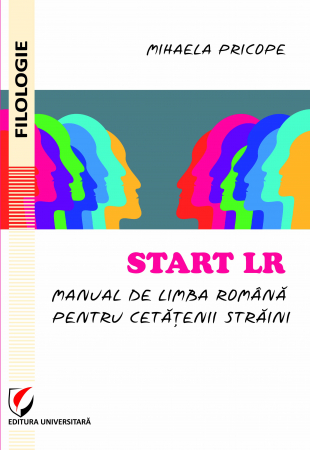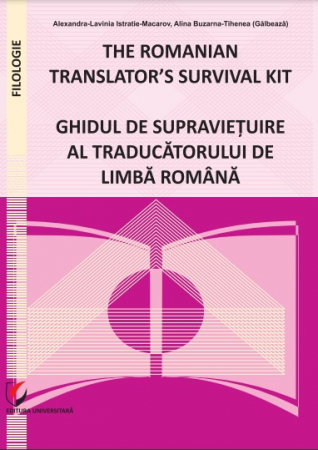Propuneri manuscrise: [email protected]: 0745 204 115
Urmărire comenzi Persoane fizice / Vânzări: 0745 200 357 / Comenzi Persoane juridice: 0721 722 783
ISBN: 978-606-28-0528-9
DOI: 10.5682/9786062805289
Anul publicării: 2016
Pagini: 292
Editura: Editura Universitară
Autor: Antonia Enache
- Download (1)
- Cuvânt înainte
- Cuprins
- Autori
- Review-uri (0)
-
Discursive Practices and Rhetoric in Barack Obama's State of the Union Addresses
Descarcă
The volume Discursive Practices and Rhetoric in Barack Obama’s State of the Union Addresses focuses on the study of American political discourse in the 21st century; more specifically, the author has selected Barack Obama’s seven State of the Union Addresses as corpus for the present paper. The volume approaches the aforementioned corpus in an interdisciplinary manner, incorporating elements pertaining both to political communication and to discourse analysis; the target audience includes a wide range of potential readers, such as politicians, political campaign advisors, sociologists, political analysts, journalists, but also people aspiring to pursue a career in these fields, students in Political Sciences, Social Sciences, Jounalism, Diplomacy or International Relations.
Political communication represents a field of study that is difficult to define, given its complex implications; however, what can be said without a doubt is that it has increasingly become an interactive process involving a multiplicity of actors, out of which the most important seem to be politicians, the media and the public, broadly referred to as the audience.
The communication process takes place downwards (to the extent to which political actors constantly inform their audiences of both their past achievements and of the policies to be pursued in the future), but also upwards, as discourse recipients have various means at their disposal to communicate with their representatives and provide feed-back. In fact, as can be seen throughout Barack Obama’s State of the Union Addresses, for a democracy to function appropriately, citizens’ participation is of the essence, as it reflects their involvement in the democratic processes and their commitment to winning the future.
Two concepts stand out in the author’s interpretation of the State of the Union Addresses. Firstly, as has been said above, it is important to grasp the audience. While the term audience itself has been used to describe a number of people who happen to listen to a stretch of discourse via a particular channel and receive a particular message, it seems that the term is broadly and fuzzily understood. Audiences are neither homogeneous nor passive;
while all discourse is written and conveyed with a certain target recipient in mind, with the aim of mobilizing the listeners, of stimulating their political interest and bringing about a reponse (either an actual vote supporting the speaker or at least the tacit support thereof), political campaign advisors must be careful and make sure that the discourse is tailored to respond to the needs of all social categories involved, an undertaking that is as challenging as it is complex. Political communication must arise in response to a certain need of the population, to high priority issues on the public agenda; for this to happen, the audience must be at the same time treated as a homogeneous whole, and carefully segmented according to their differing or even clashing interests. Last but not least, when the speaker is the US President, his audience transcends national borders; the whole world is Obama’s audience, a fact which complicates his task even further.
The second aspect to keep in mind when analysing Barack Obama’s State of the Union Addresses, is that they represent a dimension of the political actor’s permanent campaigning. In other words, in modern democracies, the attempts to persuade the listeners, to make them adhere to the orator’s point of view, are no longer confined to the election campaign alone. A political actor’s image takes the form of a mental construct that needs to be permanently reinforced, even when there are no elections in the near future.
Thus, audiences must be constantly courted, persuaded and won over; in this respect, the State of the Union Addresses (which are traditionally delivered at the beginning of each year) play a threefold role. Firstly, the President needs to remind his viewers of his past achievements, which function as legitimizers; secondly, his future intentions and plans must be highlighted – the more credible they are, the more beneficial for the population they appear to be, the more credible the speaker himself appears; thirdly, they represent a great opportunity for the orator to enhance his image before the public and gain political capital.
Some of the most important aspects covered by Ms Enache’s comprehensive paper include the way in which the speaker relates to his political opponents, the identification of role models that have impressed him through their courage, determination and seflesness and whom he subsequently proposes as national icons, the cotroversial issue of political correctness and the manner in which it is tackled by the orator, reference to vulnerable social categories to whom the President wishes to do justice, the identification of a set of abstract values (buzzwords) defining national identity, as well as a well-documented insight into the delicate problem of the American dream and the pursuit of success. Also, the paper looks into the issues of nationalism and immigration, which have raised increasing concern in recent years in view of the shifting international context, while the author’s analysis of the American identity makes a powerful impression due to its complexity and thoroughness. The features defining American identity are studied with a view to highlighting the relationship between tradition and modernity in the recreation of this multifaceted, ever-changing construct. Last but not least, the author also looks into the issue of legitimacy, providing an overview of the factors that grant credibility to the sitting President, and of American hegemony in a global context that is subject to change, uncertainty and even danger.
Ms Enache’s approach to the State of the Union Addresses (which stand out due to their importance and the wide range of topics covered) is extremely complex, providing a useful, comprehensive insight into these topics and into the way the speaker uses his discourse to gain legitimacy and political capital and to uphold his reputation and maintain the audience’s support.
The paper abounds in linguistic analyses, analyses of argumentative strategies, as well as historical, social and cultural details and explanations.
Last but not least, the paper is sustained by an impressive array of bibliographical references. We strongly believe that this ample, original research is highly necessary in Romania and will turn out to be extremely helpful to all interested readers.
Prof. Roxana Sârbu, Ph.D.
Foreword/ 9
Introduction/ 12
1. An Overview of the American Political Arena and the Role of the President/ 16
Introductory remarks/ 16
1.1. A few general considerations on the American political arena/ 17
1.1.1. On political parties and their role in a democracy /17
1.1.2. Democrats vs Republicans in the USA/ 19
1.2. The role of the President /25
1.3. The presidency of Barack Obama, an era that made history / 28
Conclusions / 31
2. A Few General Remarks on the State of the Union Addresses / 32
Introductory remarks /32
2.1. Historical and philosophical background / 32
2.2. Role of the State of the Union Addresses in American Political Communication /36
2.3. Main topics covered by Barack Obama in the State of the Union Addresses/ 41
2.3.1. Domestic issues/42
2.3.2. Foreign policy issues / 48
Conclusions /53
3. Negative Campaigning – Change vs. Continuity / 54
Introductory remarks / 54
3.1. Negative campaigning and the discourse of change/ 54
3.2. The discourse of continuity/ 66
Conclusions / 69
4. The Narrative – Reference to Concrete Situations/ 70
Introductory remarks /70
4.1. Concrete examples and the narrative /70
4.2. From the particular to the general/ 79
Conclusions / 83
5. Political Correctness / 84
Introductory remarks / 84
5.1. A few general remarks on political correctness /84
5.2. Equality for the gay community/ 88
5.3. Equality for women /93
5.4. Equality for everyone / 98
Conclusions / 102
6. Inspirational Discourse and the Politics of Buzzwords /103
Introductory remarks / 103
6.1. Accountability / responsibility /104
6.2. Transparency/ 110
6.3. Unity and cooperation /113
6.4. Compromise / 119
6.5. Patience/ 125
6.6. Justice/ 127
6.7. Trust / confidence / 133
6.8. Selflessness and sacrifice/ 139
6.9. Meritocracy / 143
6.10. Dignity /148
Conclusions / 152
7. Perspectives on Determination, Resilience and the Cult of Success/ 154
Introductory remarks/ 154
7.1. Obama’s outlook on success /155
7.2. Obama’s outlook on determination and resilience/ 160
Conclusions/ 163
8. Invoking Tradition and the American Dream/ 164
Introductory remarks / 164
8.1. Tradition, personalities, historic landmarks and important moments from the past/ 164
8.2. The American Dream /174
Conclusions / 184
9. American Identity/ 186
Introductory remarks / 186
9.1. A few general considerations on American identity /186
9.2. Identity and nationalism/ 188
9.3. Second-class citizenship and its implications /191
9.4. Other considerations on identity / 194
9.5. The concept of identity in Barack Obama’s State of the Union Addresses/ 196
Conclusions/ 203
10. Nationalism and Immigration/ 204
Introductory remarks/ 204
10.1. Perspectives on nationalism / 204
10.2. Perspectives on immigration/ 212
Conclusions/ 220
11. American Hegemony ./ 222
Introductory remarks /222
11.1. A few general considerations on American hegemony/222
11.2. Reinforcing hegemony through discourse /225
11.3. American supremacy in decline?/ 237
Conclusions/241
12. Overcoming Challenges /242
Introductory remarks / 242
12.1. Challenges fully overcome /243
12.2. Challenges ahead/. 244
12.3. Challenges partly overcome/ 248
Conclusions / 251
13. The Populist Appeal / 252
Introductory remarks / 252
13.1. The dichotomy between the rich and the poor / 253
13.2. Invoking socially vulnerable categories /259
Conclusions /267
14. The Quest for Legitimacy/ 268
Introductory remarks /268
14.1. Legitimacy based on economic factors/269
14.2. Legitimacy based on other factors /274
Conclusions/ 277
Conclusions/ 278
References and bibliography / 281

6359.png)
![Discursive Practices and Rhetoric in Barack Obama's State of the Union Addresses - Antonia Enache [1] Discursive Practices and Rhetoric in Barack Obama's State of the Union Addresses - Antonia Enache [1]](https://gomagcdn.ro/domains/editurauniversitara.ro/files/product/large/discursive-practices-and-rhetoric-in-barack-obama-s-state-of-the-union-addresses-479-820263.jpg)














